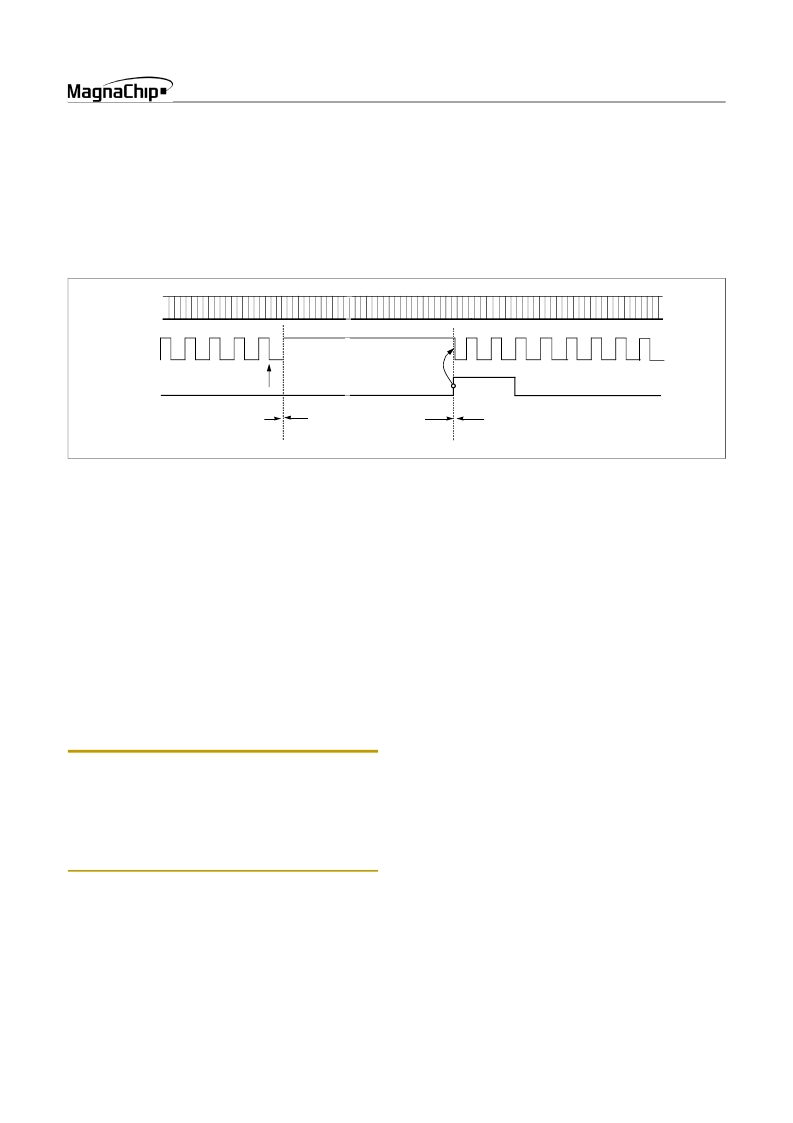- 您現(xiàn)在的位置:買賣IC網(wǎng) > PDF目錄370644 > HMS81C2020AQ (Electronic Theatre Controls, Inc.) CMOS Single-Chip 8-Bit Microcontroller with A/D Converter & VFD Driver PDF資料下載
參數(shù)資料
| 型號(hào): | HMS81C2020AQ |
| 廠商: | Electronic Theatre Controls, Inc. |
| 英文描述: | CMOS Single-Chip 8-Bit Microcontroller with A/D Converter & VFD Driver |
| 中文描述: | CMOS單芯片8位微控制器與A / D轉(zhuǎn)換器 |
| 文件頁(yè)數(shù): | 83/107頁(yè) |
| 文件大?。?/td> | 1482K |
| 代理商: | HMS81C2020AQ |
第1頁(yè)第2頁(yè)第3頁(yè)第4頁(yè)第5頁(yè)第6頁(yè)第7頁(yè)第8頁(yè)第9頁(yè)第10頁(yè)第11頁(yè)第12頁(yè)第13頁(yè)第14頁(yè)第15頁(yè)第16頁(yè)第17頁(yè)第18頁(yè)第19頁(yè)第20頁(yè)第21頁(yè)第22頁(yè)第23頁(yè)第24頁(yè)第25頁(yè)第26頁(yè)第27頁(yè)第28頁(yè)第29頁(yè)第30頁(yè)第31頁(yè)第32頁(yè)第33頁(yè)第34頁(yè)第35頁(yè)第36頁(yè)第37頁(yè)第38頁(yè)第39頁(yè)第40頁(yè)第41頁(yè)第42頁(yè)第43頁(yè)第44頁(yè)第45頁(yè)第46頁(yè)第47頁(yè)第48頁(yè)第49頁(yè)第50頁(yè)第51頁(yè)第52頁(yè)第53頁(yè)第54頁(yè)第55頁(yè)第56頁(yè)第57頁(yè)第58頁(yè)第59頁(yè)第60頁(yè)第61頁(yè)第62頁(yè)第63頁(yè)第64頁(yè)第65頁(yè)第66頁(yè)第67頁(yè)第68頁(yè)第69頁(yè)第70頁(yè)第71頁(yè)第72頁(yè)第73頁(yè)第74頁(yè)第75頁(yè)第76頁(yè)第77頁(yè)第78頁(yè)第79頁(yè)第80頁(yè)第81頁(yè)第82頁(yè)當(dāng)前第83頁(yè)第84頁(yè)第85頁(yè)第86頁(yè)第87頁(yè)第88頁(yè)第89頁(yè)第90頁(yè)第91頁(yè)第92頁(yè)第93頁(yè)第94頁(yè)第95頁(yè)第96頁(yè)第97頁(yè)第98頁(yè)第99頁(yè)第100頁(yè)第101頁(yè)第102頁(yè)第103頁(yè)第104頁(yè)第105頁(yè)第106頁(yè)第107頁(yè)

HMS81C2012A/2020A
SEP. 2004 Ver 2.00
79
Release the Wake-up Timer mode
The exit from Wake-up Timer mode is hardware reset,
Timer0 overflow or external interrupt. Reset re-defines all
the Control registers but does not change the on-chip
RAM. External interrupts and Timer0 overflow allow both
on-chip RAM and Control registers to retain their values.
If I-flag = 1, the normal interrupt response takes place. If I-
flag = 0, the chip will resume execution starting with the
instruction following the STOP instruction. It will not vec-
tor to interrupt service routine.(refer to Figure 17-1)
When exit from Wake-up Timer mode by external inter-
rupt or timer0 overflow, the oscillation stabilization time is
not required to normal operation. Because this mode do not
stop the on-chip oscillator shown as Figure 17-4.
Figure 17-4 Wake-up Timer Mode Releasing by External Interrupt or Timer0 Interrupt
17.4 Internal RC-Oscillated Watchdog Timer Mode
In the Internal RC-Oscillated Watchdog Timer mode, the
on-chip oscillator is stopped. But internal RC oscillation
circuit is oscillated in this mode. The on-chip RAM and
Control registers are held. The port pins out the values held
by their respective port data register, port direction regis-
ters.
The Internal RC-Oscillated Watchdog Timer mode is
activated by execution of STOP instruction after set-
ting the bit WAKEUP and RCWDT of CKCTLR to "
01 ". (This register should be written by byte operation.
If this register is set by bit manipulation instruction, for
example "set1" or "clr1" instruction, it may be unde-
sired operation)
Note:
Caution: After STOP instruction, at least two or more
NOP instruction should be written
Ex)
LDM WDTR
,#1111_1111B
LDM CKCTLR
,#0
01
0_1110B
STOP
NOP
NOP
The exit from Internal RC-Oscillated Watchdog Timer
mode is hardware reset or external interrupt. Reset re-de-
fines all the Control registers but does not change the on-
chip RAM. External interrupts allow both on-chip RAM
and Control registers to retain their values.
If I-flag = 1, the normal interrupt response takes place. In
this case, if the bit WDTON of CKCTLR is set to "0" and
the bit WDTE of IENH is set to "1", the device will execute
the watchdog timer interrupt service routine.(Figure 17-5)
However, if the bit WDTON of CKCTLR is set to "1", the
device will generate the internal RESET signal and exe-
cute the reset processing. (Figure 17-6)
If I-flag = 0, the chip will resume execution starting with
the instruction following the STOP instruction. It will not
vector to interrupt service routine.(refer to Figure 17-1)
When exit from Internal RC-Oscillated Watchdog Timer
mode by external interrupt, the oscillation stabilization
time is required to normal operation. Figure 17-5 shows
the timing diagram. When release the Internal RC-Oscil-
lated Watchdog Timer mode, the basic interval timer is ac-
tivated on wake-up. It is increased from 00
H
until FF
H
. The
count overflow is set to start normal operation. Therefore,
before STOP instruction, user must be set its relevant pres-
caler divide ratio to have long enough time (more than
20msec). This guarantees that oscillator has started and
stabilized.
By reset, exit from internal RC-Oscillated Watchdog Tim-
er mode is shown in Figure 17-6.
Wake-up Timer Mode
( stop the CPU clock )
Oscillator
(XI pin)
~
STOP Instruction
Execution
Normal Operation
Normal Operation
Do not need Stabilization Time
CPU
Clock
Request
Interrupt
~
~
~
相關(guān)PDF資料 |
PDF描述 |
|---|---|
| HMS81C20XXA | CMOS Single-Chip 8-Bit Microcontroller with A/D Converter & VFD Driver |
| HMS81C20XXA-HK | CMOS Single-Chip 8-Bit Microcontroller with A/D Converter & VFD Driver |
| HN2716 | 2048-word x 8bit Erasable and Electrically Programmable Only Memory |
| HN27512 | 512K (64K X 8 BIT ) UV AND OTP EPROM |
| HN27512P-25 | 512K (64K X 8 BIT ) UV AND OTP EPROM |
相關(guān)代理商/技術(shù)參數(shù) |
參數(shù)描述 |
|---|---|
| HMS81C20XXA | 制造商:未知廠家 制造商全稱:未知廠家 功能描述:CMOS Single-Chip 8-Bit Microcontroller with A/D Converter & VFD Driver |
| HMS81C20XXA-HK | 制造商:未知廠家 制造商全稱:未知廠家 功能描述:CMOS Single-Chip 8-Bit Microcontroller with A/D Converter & VFD Driver |
| HMS81C2112A | 制造商:未知廠家 制造商全稱:未知廠家 功能描述:[VFD MCU: High Voltage IO/ADC/HS PWM/SCI] |
| HMS81C2120A | 制造商:未知廠家 制造商全稱:未知廠家 功能描述:[VFD MCU: High Voltage IO/ADC/HS PWM/SCI] |
| HMS81C4260 | 制造商:HYNIX 制造商全稱:Hynix Semiconductor 功能描述:HYNIX SEMICONDUCTOR INC. 8-BIT SINGLE-CHIP MICROCONTROLLERS |
發(fā)布緊急采購(gòu),3分鐘左右您將得到回復(fù)。